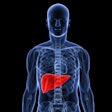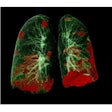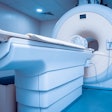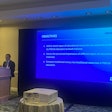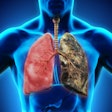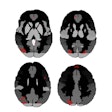One in every 30 women in Indian metros will develop breast cancer during her lifetime, as compared to one in 70 rural women. In Western countries, the estimated incidence is one in nine women.
Of all the new cases of cancer being diagnosed in India, about 40% can afflict women -- with the most common types being breast and cervical cancer.
Facts must dispel myths, and knowledge must dispel ignorance. Breast cancer is rapidly emerging as the most common cancer among urban Indian women, especially in Mumbai and Delhi. Among the suspected causes and risk factors are a range of lifestyle changes, including marrying late, obesity, choosing not to breast-feed, bearing fewer children, and stress.
According to data compiled by the Indian Council of Medical Research (ICMR), breast cancer is already the number one form of cancer in women in the cities of Mumbai and Delhi. In Bangalore and Chennai, cervical cancer is more prevalent, but the incidence of breast cancer is also on the rise.
Increasing hygiene and improved healthcare facilities have helped to control viral infections that lead to cervical cancers, but changing urban lifestyles are believed to be behind the rise in the incidence of breast cancer. The medical community is slowing waking up to this grim fact.
Statistics from the Indian Cancer Society show about 80,000 new cases of breast cancer are detected in Indian cities every year. The disease claims 35,000 lives annually, up 18% from 1990.
In 1970, for instance, the incidence of breast cancer was barely 20 in 100,000 urban women. Today that number has shot up to 28.6 in 100,000, nearly a 50% increase.
The incidence of breast cancer is likely to double in the next 10 years, and some experts believe that one in every 20 women in the city of Mumbai and Delhi is likely to develop breast cancer.
This is only the tip of the iceberg because most breast cancer cases still go unreported. Worse, the age at the time of diagnosis is getting younger. Women in their 20s and 30s are also developing malignant tumours, unlike a decade ago when breast cancer was usually limited to older women.
According to reports, 70% of breast cancer patients in Western countries are older than 50 years of age. In India, over 50% of breast cancer patients are younger than 50 years of age, and cancer is usually detected between ages 40 and 50.
In Western countries where women are acutely aware of their risk, a majority of breast cancer cases are detected in the first or second stage, when damage control is relatively easy. In India, however, the reverse is true. A majority (nearly 90%) of cases are detected only in the third or fourth stages, when the disease is advanced.
Although the incidence of breast cancer in Indian women is substantially lower than that in Western countries, the load in terms of sheer numbers is large for the country.
Screening for breast cancer
In Western countries, mammography screening has been shown to reduce mortality from breast cancer in women over age of 50. Unlike Western countries where screening mammography is funded by Medicare and by the government, India has no programmes entailing reimbursement from insurance or the government for screening mammograms.
However, increased awareness is now leading women who are asymptomatic to undergo regular mammography at their own cost. Many hospitals now offer mammography as part of a health checkup package. It is mandatory for all mammography units to be approved by the Radiological Safety Division of the Atomic Energy Regulatory Board (AERB), Government of India.
Nongovernment organisations (NGOs), print and electronic media, and organisations promoting women's health play an important role by creating awareness about the rising incidence of breast cancer and the importance of mammography screening for early detection and diagnosis.
By Dr Subhash K. Ramani
AuntMinnieIndia.com contributing writer
October 27, 2004
Dr Subhash K. Ramani is an associate professor and assistant radiologist at Tata Memorial Hospital in Mumbai.
Copyright © 2004 AuntMinnie.com










